This article on Pugs is part of a series to highlight the Big Picture of health, welfare and breeding and to help develop Globally Relevant Integrated Health Profiles (GRIHPs) for many breeds. See IPFD's Get a GRIHP! on Breed Health Initiative
There are many others doing great work to advance heath, well-being, and welfare in this wonderful breed. We reference and link to terrific work, developments, reports, and research from the UK, USA, Sweden, Finland, and more below. Thanks to all of those working on behalf of Pugs.
ALSO PLEASE SEE: the companion article to this GRIHP - Pug - DogWellNet Resources
This page contains links to numerous articles, blogs, research, IPFD's Partners and Collaborators content, and videos that relate to Pugs. The Big Picture of health and welfare in Pugs is complicated and many dedicated people are working to address issues in the breed.
This is a 'living document' - so if anyone has more material to share or point us to - please let us know!
Table of Contents
Breed At a Glance - Pugs
Ancient in origins, developed for companionship, Pugs are extremely social, good natured, uninhibited, devoted to their people and somewhat stubborn. The dogs require love and attention in order to thrive. Pugs shed year round and so require consistent grooming along with cleaning of skin folds on their faces which can harbor bacteria or yeast. Pugs are considered a brachycephalic (flat-faced) breed and are subject to health issues related to their morphology (see below). Lifespan of healthy Pugs is estimated at 10-14+ years, though dogs severely impacted by health conditions may not live past middle age. In the worst affected dogs, problems - including need for expensive surgeries - may start at very young ages (<1-3 years). Management of dogs is crucial as, e.g., obesity further aggravates problems.
The Pug is a breed that epitomizes changes that arise due to intense and directed selection by dog breeders, especially from the show world. There has been a marked change in conformation of this breed, especially but not limited to the skull and face; and unfortunately many of these changes are associated with health and welfare issues. Although not experiencing the logarithmic increase in popularity of the French Bulldog, these breeds share many challenges beyond the usual problems of brachycephalics (flat faces, impaired breathing, bad teeth, etc.) including a breed-wide occurrence of abnormal spines. In several research studies it has been shown that owners may normalize or fail recognize significant health problems including problems with breathing and even spinal problems, thinking the dogs simply don't like to exercise. It may be that veterinarians may also normalize problems, not wishing to disappoint the highly attached owners.
The facial changes to the breed over time are indicated by Guintard’s table shown below and changes to body and head characteristics can be noted in the photos here which show early pugs (Victorian Era) and those of today. The future for these compromised breeds is very uncertain internationally with several countries in Europe mounting legislative and legal challenges to the breeding of dogs with these flat faces, whereas in the USA the American Kennel Club parent breed club has standards demanding extreme conformation. Veterinarians in the UK and Sweden have spoken out against the health problems in Pugs; but worldwide there is an increase in surgeries and veterinary costs associated with these dogs. There are efforts to save the breed, i.e. Retro Pugs. However, these are generally not accepted by the show world. Time will tell whether owners will embrace healthier 'designs'.
In the UK, legislation which states that “no dog may be kept for breeding if it can reasonably be expected, on the basis of its genotype, phenotype, or state of health that breeding from it could have a detrimental effect on its health or welfare or the health or welfare of its offspring” (Government of the United Kingdom, 2018 (under Protection from pain, suffering, injury and disease)). Many other European countries have similar legislation; enforcement varies. In dogs with extremes of conformation, such as Pugs, it is their overall conformation that impacts the health and welfare of the offspring, and the future will see further challenges for these breeds.
See our many blogs and articles listed below for further information, including our Pug - DogWellNet Resources.






The Pug has become the focus of education efforts and campaigns ...
 Bred for Looks Born to Suffer, veterinary petitions (see a sample articles from the UK and Vets must ‘dare to speak out’ Urgent action on brachycephalic dogs called for during panel discussion at FECAVA/WSAVA/DSAVA Congress in Copenhagen as well as our articles under the Breeding for Extremes section ), which offers a Brachycephalic articles archive along with more current articles on the increasing legislative approaches to regulating breeding (e.g. Netherlands).
Bred for Looks Born to Suffer, veterinary petitions (see a sample articles from the UK and Vets must ‘dare to speak out’ Urgent action on brachycephalic dogs called for during panel discussion at FECAVA/WSAVA/DSAVA Congress in Copenhagen as well as our articles under the Breeding for Extremes section ), which offers a Brachycephalic articles archive along with more current articles on the increasing legislative approaches to regulating breeding (e.g. Netherlands).
It may be that the campaigns and education have influenced declining registrations in some countries. However, paradoxically, French Bulldogs – a breed with similar concerns and challenges around extreme conformation – have sky-rocketed in numbers (see the Frenchie GRIHP). And it may be that declining numbers in national kennel clubs only reflect a tendency not to register dogs.
Veterinarians – individually, professionally and collaboratively - must take a leading role in as stakeholders in the health and welfare of compromised breeds (see Dr. Brenda Bonnett's blog - EU Parliament Event - Health Before Looks.)
Key Health Conditions - The Basics: Pugs
Brachycephalic breeds, including the Pug, are strongly predisposed to a range of disorders related to their conformation, including (see evidence/statistics, below):
-
breathing difficulties | respiratory disease
-
eye disease (corneal ulcers, entropion, distichiasis, pigmentary keratopathy | dry eye)
-
spinal disease (hemivertebrae | screw tail | Pug Myelopathy)
-
heat stroke
-
skin problems
-
dystocia and other whelping problems, difficulty with normal mating (need artificial insemination)
What Do Caretakers of Pugs Need to Know?
Weight Management: This is a serious problem for health and welfare. Pugs have a tendency to put on excess pounds - the dogs love food - obesity may come with increased age and the tendency to gain weight is associated with spay or neuter. Body condition should be monitored as excess weight exacerbates locomotor and spinal/neurological problems, as well as contributes to breathing difficulties and associated tendency to overheat. As in other short-faced dogs, owners tend to think the dogs are lazy and do not need much exercise, whereas this may be a function of their decreased capacity to get enough oxygen, i.e. breathe. A sedentary lifestyle and weight gain will severely aggravate existing health risks in Pugs.
Heat stroke: respiratory challenges present in flat-faced breeds have been shown to make dogs very susceptible to heat exhaustion or heat stroke. Management tips for caretakers are available at RSPCA: https://www.rspca.org.uk/adviceandwelfare/pets/dogs/health/heatstroke
 Eye care: Due to conformation of the face/head, pugs are very susceptible to eye injury or irritation. Examination of eyes is important and advised as treatment of some common eye conditions can be helpful/minimize damage. It is important to remember that, whether or not stoic dogs show it, injuries to the cornea (front of the eye) are extremely painful. Many pugs have chronic problems. Pugs have 12 to 16 times increased risk of corneal problems compared to other breeds (see below).
Eye care: Due to conformation of the face/head, pugs are very susceptible to eye injury or irritation. Examination of eyes is important and advised as treatment of some common eye conditions can be helpful/minimize damage. It is important to remember that, whether or not stoic dogs show it, injuries to the cornea (front of the eye) are extremely painful. Many pugs have chronic problems. Pugs have 12 to 16 times increased risk of corneal problems compared to other breeds (see below).
Skin care: Deep folds / wrinkles about the face require cleaning to prevent infection. Pugs may also suffer from allergies leading to pyoderma, dermatitis, fungal infections and other skin problems.
Ears and teeth care: outer ear infections or more serious ear canal issues are management considerations. Essentially every Pug has abnormal, misaligned dentition leading to various problems including tooth extractions.
Comment: Surgical correction of pinched nares, elongated soft pallet or other defects in the upper respiratory tract may be required if respiration is severely compromised. Correction of eye issues (entropion, in-turned lashes, keratitis...) may be necessary to prevent eye irritation or vision impairment. Hemivertebrae: spinal surgery in dogs with moderate to severe symptoms of compression of the spinal cord may be required, or in the worst case scenario, vertebral defects lead to euthanasia. Surgeries to correct these inherited defects are expensive, risky, complicated – and problems are, in general, never fully cured and dogs continued to be compromised.
Conformation traits in Pugs vary. Extreme traits such as lack of length of muzzle, bulging eyes, excessively short backs, thick, short necks, and poor skeletal structure can lead to development of conditions that significantly compromise health, length of life, and general welfare of dogs in this breed. See FECAVA's Poster on Extreme Breeding which addresses impacts to dogs, owners, vets, and society at large. Owners and veterinarians 'normalizing' Pugs' tendencies for snoring, occasional breathlessness and collapse, atypical sleeping posture to keep airways open, exercise/heat intolerance, damage to eyes, the need for surgeries and acceptance of other health-impairing characteristics or associated reproductive difficulties in the short-faced breeds is unlikely to lead to future generations of healthier, more fit and functional dogs.
MANY owners post 'cute' pictures of Pugs displaying problems on Instagram, and Pugs are a common breed in advertisements. It has been recommended that promotion of these dogs by the pet industry and veterinarians should be curtailed.
Statistics and Health Strategies
Population Statistics
Comment: KC data shown in the chart below indicate that Pug registrations for the most part remained steady from 2010 - 2019 with the exception of Pugs registered by The Kennel Club UK, which saw a steep increase in registered Pugs from 2010 - 2017. Surging populations often lead to greater numbers of dogs requiring health or rescue services. The UK Kennel Club's registered pugs represent a portion of all pugs in the UK. Work of the Brachycephalic Working Group, greater engagement with the Breed Health Coordinators and Breed Health and Conservation plans continue to help engagement.

Statistics from the previous decade (multiple registries/countries) are shown in the chart below (from the Finnish JTO document) show a similar pattern. The exponential growth of UK Pug registrations began in the early 2000's.

AKC Registrations for pugs have dropped year over year from 2008-2018. SEE MORE at The Pug Dog Club of America - AKC Statistics

Health & Breeding Statistics
The evidence available in literature and from the Agria Breed Profiles makes it clear that Pugs have a higher risk of respiratory, eye, skin, neurologic and other conditions compared to other breeds. This is seen in spite of that fact that we know there is under-reporting of many conditions in the sources of data due to some heritable conditions not being covered by insurance and even a tendency of veterinarians to not record dogs with problems typical of the breed. Not only do many of these conditions results in high veterinary costs, they cause chronic suffering to the pet. Because of their nature, however, the level of suffering is often not apparent to owners who may think their dogs are 'fine'.
In addition, Pugs often show these conditions starting at a markedly lower age than other breeds of dogs.
Agria - Swedish Breed Profiles
CONTEXT: For many years, Agria Animal Insurance, Sweden (Agria Djurförsäkring, Stockholm, Sweden) has supported veterinary research and provided statistics on diagnoses for health and life claims to Swedish breed clubs. See Breeds with Swedish Insurance Data and Agria Breed Profiles (where breeds are compared to All Breeds)! We recommend that you download the Agria Breed Profiles for the Pug and study them for full available information. Some excerpts are shown below! The great benefits of the Swedish insurance data are that they include almost 40% of the national population of dogs, so are very representative; note that animals at very old ages are likely under-represented. Most importantly, information is available on all insured dogs, not simply those who get sick or die. This allows calculation of population-based rates (expressed as events per 10,000 years-at-risk) as well as risks and proportions. Statistics are presented as overall morbidity (rate of one or more veterinary care events [VCE]) or mortality (death), by general diagnostic categories, and by specific diagnoses.
Pugs higher rates of veterinary care events, and the age of first event is just over 2 years of age.
Median age at death is Swedish statistics is about 6 years of age:

For all conditions where red line goes to the right of the yellow line, Pugs have increased risk compared to All Breeds.






Comment: Other populations of Pugs specifically, and of brachycephalic breeds generally, show similar predispositions to develop health conditions as those reported in the Agria Breed Profiles. See examples below.
US: Nationwide Pet Insurance - Brachycephalic Report 2017

UK: VetCompass - Veterinary Practice Data

ACVO - Pug Eye Statistics

Recent History...
Below is an outtake from the 2004 Report from the Kennel Club/British Small Animal Veterinary Association Scientific Committee on Pugs.

Pugs - Breed Specific Breeding Strategies
NOTE: Although specific tests are outlined in various countries for Pugs, the many and general issues of health and welfare come primarily from the conformation of the dogs. A Big Picture approach is needed to improve the situation, and this will not be accomplished by simply doing the tests that are available. The UK Breed Conservation Plan comes closest to this, but recent statistics indicate that few dogs are (so far) participating in the scheme.
Pug_BHCP_2020.pdf
More Info
The 5 Star Health Scheme
The 5 Star Health Scheme was launched at Discover Dogs 2017. The five components of the scheme are:
-
Visual Health Assessment – a non-invasive assessment by the owners’ own vet, addressing the general health and wellbeing of the dog.
-
Patella testing – the Putnam classification scheme is used for grading.
-
BOAS – grading by the RFG scheme
-
PDE DNA test –usingthe UC Davis test, which gives an indication of risk. Can be done at any age.
-
Hemivertebrae (HV) screening – radiographs must be submitted to Dick White Referrals in Newmarket.
The National Pug Health Scheme
The National Pug Health Scheme was launched in November 2018 and is comprised of three levels, bronze, silver and gold.
Similarly to the Council Health Scheme dogs must be of 12 months of age prior to inclusion in the scheme.
Bronze
-
Heart auscultation – must have a clear result
-
BOAS testing and recording of any evidence of surgery (any grade permitted to next level)
-
Eye examination (grading chart) – must have a clear result
-
Skin grade (0 –3)
-
Ear canal stenosis (0 –3)
-
Patella grading – Putnam scoring system
-
Pug Dog Encephalitis (PDE) DNA test (optional)
Dogs will not be able to proceed to the next level if they show any sign of aggression.
Silver
-
Must be in possession of a bronze certificate
-
PDE certification
-
Hemivertebrae clear x-ray
-
BOAS tested – must be grade 2 or below Dogs that are grade 3 BOAS, have received treatment for BOAS, or have been graded 3+ for patellas will not be granted a silver certificate.
Gold
-
Dogs must be over a year of age and have both a bronze and silver certificate
-
BOAS tested – grade 0 or 1
-
Patella grade 0 or 1
Comment: Note that not all breeder's dogs participate in all health testing schemes... so it is the puppy buyer's responsibility to investigate a breeder's focus on matters of breeding and health testing. As an example see RFG results pictured below and Cassandra Smith's report, Summary of Kennel Club Breed Records: Pug 2020.

Finland: Suomen Mopsikerho ry, see: http://www.suomenmopsikerho.fi/index.php/seura/jalostustoiminnan-ohjesaannot
Requirements
A 'Pass' on Walk Test for at least 1 breeding partner
Eye examination
Knee examination - At least one must have zero (0/0) knees. Limit value 1.
USA: See the Pug Dog Club of America's Pug Health Guide, Brachycephalic Syndrome and the Pug, and Health Testing Requirements pages for more complete information.
NOTE: In the USA (above and OFA/CHIC below) no tests are mandatory, and all listings are voluntary.
OFA/CHIC Requirements
Hip Dysplasia
Patellar Luxation
Eye Examination by a boarded ACVO Ophthalmologist - Pug Dog Club of America recommends ANNUAL screening.
Pug Dog Encephalitis (PDE)
OFA Health certifications used by US pug breeders This doc is from the open registry https://secure.ofa.org/regSums/PUG.pdf
OFA PDCA Health Survey and results : https://www.ofa.org/about/educational-resources/health-surveys#api_summary
Comment: The table below by no means represents all health tests or all Health Strategy providers' or breeders' work on health matters in the Pug breed. Key conditions/tests that are mentioned as applicable to the breed are shown. Pug health management concerns/testing recommendations do not appear to be notably different from country to country. Some registries 'require' testing of breeding pairings / parents as a condition for registration of litters or for participation in breeder listings. The voluntary nature of testing is apparent worldwide as health testing of breeding dogs is not mandated under the animal welfare laws in most countries at this time. In other words, dog breeders are not required by governments to do any health testing of breeding dogs in order to produce litters and sell pups. Regardless, a 'recommended' status indicates an acknowledgement by cynological organizations/KCs and Breed Clubs that breeding dogs generally should be evaluated and their results taken into consideration in choosing mating pairs most likely to produce quality litters/pups.
Sample - Conditions/Health Tests and Health Strategy Provider Recognition
|
Condition
|
Health Strategy Provider (HSP)
|
Status
|
|
Eye Exam
|
Pug Dog Club of America
|
Required for CHIC/Recommended Annually
|
|
|
Suomen Mopsikerho ry - Finland
|
Required
|
|
|
Pug Breed Council - UK
|
Required
|
|
|
Northern Pug Dog Club
|
Required
|
|
BOAS
|
Suomen Mopsikerho ry
|
Walk test pass required for 1 breeding partner
|
|
|
Pug Breed Council - UK
|
Required - Respiratory Function Grading Scheme
|
|
|
Northern Pug Dog Club
|
Required - Respiratory Function Grading Scheme
|
|
|
Pug Dog club of America
|
Acknowledged/on radar
|
|
|
The Kennel Club UK
|
Priority Breeding Scheme (Assured Breeders)
|
|
|
Club für den Mops - Germany
|
Function/stress test available
|
|
|
Mopsorden se - Sweden
|
Assessment/evaluation available
|
|
PDE
|
Club für den Mops - Germany
|
Required - Carriers of genetic mutation (N / S or S / S) may only be mated with dogs that are not carriers (N / N).
|
|
|
Suomen Mopsikerho ry - Finland
|
Required
|
|
|
Pug Dog Club of America
|
Required for CHIC/Recommended
|
|
Hips
|
Pug Dog Club of America
|
Required for CHIC/Recommended
|
|
|
Suomen Mopsikerho ry - Finland
|
Results for tested dogs are recorded in FKC's database
|
|
Patellas
|
Suomen Mopsikerho ry - Finland
|
Required: Official knee statement according to the instructions of the Kennel Club. The dog must be at least one year old at the time of the study. A study conducted under the age of three is valid for two years from the date of the statement. At least one must have zero (0/0) knees. Limit value 1.
|
|
|
Pug Dog Club of America
|
Required for CHIC/Recommended
|
|
|
UK: Pug Breed Council - UK: The 5 Star Health Scheme
|
Required/part of the scheme
|
|
|
UK: Northern Pug Dog Club: National Pug Health Scheme
|
Required (Gold level 0 or 1)/part of the scheme
|
|
Elbows
|
Pug Dog Club of America
|
Optional for CHIC - but recommended
|
Health Screening Tests for Pugs
SUMMARY: Health tests for Pugs include those inherited conditions that are broadly relevant to brachycephalic dogs – clinical eye examinations, evaluation of respiratory function, orthopedic conditions including hip and elbow dysplasia, patella luxation, spinal (hemivertebrae), and monitoring of skin conditions. The most common eye conditions include corneal ulceration, entropion, ectropion, and distichiasis, (recorded in multiple health registries). Heart testing is also done, as compromised respiratory function can lead to heart failure. Obviously it is unknown to what extent health tests are truly used to inform breeding unless the tests are mandatory and used to inform registration.
HGTD DNA Tests for Pugs
The Harmonization of Genetic Testing for Dogs (HGTD) Basics: The HGTD Searchable Database - Search by Breed, Search by Disease / Test and Search by Genetic Test Provider (GTP) / Lab + Genetic Counselling Resources. HGTD catalogs information provided voluntarily from genetic test providers (GTPs) including information on their company and services, quality measures and expertise, tests offered and more. As of January 2021, the HGTD Database includes 82 academic and commercial genetic test providers (GTPs) in 22 countries. Our searchable genetic phenes (phenes = characteristics/genetically controlled feature) database currently holds information on 300+ phenes across all breeds/types and provides information on each phene: links to the Online Mendelian Inheritance in Animals database (OMIA), gene + mutations, a simple and advanced disease description, inheritance details, links to original publications, patents/licenses, comments from the original researchers/experts on application, and breed specific information (such as research/validation) - where possible. Breed Relevance Ratings (BRR) support evidence-based usage and application of genetic tests. The HGTD database relevance rating indicates the level of available evidence supporting the application of a specific genetic test for a specific breed/type. Currently, the relevance rating is based on a wide variety of evidence sources. This includes peer-reviewed research papers, recommendations from the original researchers/test developers, input from additional experts including veterinary specialists, and breed experts. It is hoped that, by being more informative about what we currently know or do not know about a specific test for a specific breed, that dog health advisors and owners can make more informed decisions. Remember, this Breed Relevance Rating is not everything we need to know about the disease or characteristic; it is focused on the genetic test.
SUMMARY: There are a few breed-specific genetic tests available to the Pug. Most available breed-specific genetic tests are for diseases considered rare, or with unknown prevalence. However, Necrotizing Meningoencephalitis (NME), a complex disease, may be more common. Care in application of NME test results must be undertaken, as the test indicates risk only and the clinical signs of disease may only impact 1 in 8 genetically at-risk dogs. The majority of inherited health concerns for the pug are conformation-related, and do not have a genetic test.
♦ BIG PICTURE THINKING ♦ Please take into consideration - Most of the conditions with genetic tests are rare in the general population, but valuable for breeders to use to efficiently reduce risks while supporting good genetic diversity in the breed as a whole. See the Genetic Diversity section below. Also be aware that there are many DNA tests that are available for ALL breeds, that while the test itself is valid, the condition may not be a major health concern or included in health strategies for every breed. See the HGTD for a full list of DNA tests including "Trait" and "Parentage" tests.
Test: Degenerative Myelopathy
BRR: 
HSP comment: For the pug, DM is considered rare, and it is important to note that there are other spinal concerns associated with the Pug that are considered more common, that do not currently have genetic tests available, and that this should not be confused with testing for the risk variant for DM. DM inheritance across all breeds is complex, not fully understood, and does not necessarily indicate an “at risk” dog will go on to develop clinical signs of disease. As research continues, there is increasing indication that other genes may be involved in the risk of DM disease development in breeds. For more information, please see: Pug Myelopathy vs Degenerative Myelopathy (pugrearataxiaparalysis.com).
Test: May-Hegglin Anomaly
BRR: 
HSP comment: This disease is considered rare and is described in only 1 dog in the literature. We do not have any indication of how many dogs have tested genetically affected or carrier for this mutation. It is possible that the use of this test is primarily helpful where there is already concern about bleeding disorders in the dog/pedigree.
Test: Necrotizing Meningoencephalitis (Pug Dog Encephalitis – PDE)
BRR: 
HSP comment: Also known and Pug dog encephalitis (PDE), this is a fatal neurological disease that affects most often young adult female dogs. Currently, the only genetic test available is a marker test that indicates risk-associated mutations. For dogs who are homozygous for the NME-associated marker (e.g. risk haplotype), current research indicates a lifetime risk of 12.75% of developing clinical signs (apx. 1 in 8 pugs in this group will develop NME). Given the complex nature of NME, and the high estimation of the risk haplotype in the pug, breeders using this test are recommended to use heterozygous (e.g. carrier) and homozygous normal (e.g. clear) dogs in mating plans to reduce production of higher-risk puppies without causing severe damage to genetic diversity.
Test: Progressive Retinal Atrophy crd4 (PRA crd4) / cord1
BRR: 
HSP comment: This eye disease is almost exclusively associated with miniature long-haired dachshunds, but there has been research indicating the detection of the risk mutation, and clinical signs (phenotype) in the pug. This is an early-onset eye disease leading to blindness. It is not known how common this condition may be in the breed.
Test: Pyruvate Kinase Deficiency
BRR: 
HSP comment: This disease, first studied in the Basenji, but with specific mutations across diverse breeds, leads to chronic anemia. There is a breed-specific mutation associated with the pug: c.848T>C. It is unknown how common this condition is in the pug.
Test: Von Willebrand Disease I
BRR: 
HSP comment: Von Willebrand Disease Type 1 is the most common hereditary blood clotting disorder in dogs, and one of three Types (II and III) described. Type 1 is considered a “milder” form of the disease and may have autosomal recessive with incomplete dominance inheritance – meaning that not all dogs who inherit 2 copies of the mutation have symptoms. Symptoms vary but are related to bleeding and reduced clotting ability. We are currently seeking research confirmation of the mutation being causal for the phenotype in the pug.
Test: Coat colour dilution, dilution, MLPH-related
BRR: 
HSP comment: The dilution test MLPH-related is responsible for identifying the genes associated with “blue” or “fawn” coat colours in a number of breeds and dog types. In addition, there is an association with the risks of developing dilution-related alopecia. Research from 2020 (Van Buren et al.) found that there are many inconsistencies between testing for MLPH and the phenotype, indicating that there could be other variants involved. Researchers recommend that these challenges should be considered when undertaking genetic testing and seeking genetic counselling.
DNA Tests - References
2020 Van Buren, S.L., Minor, K.M., Grahn, R.A., Mickelson, J.R., Grahn, J.C., Malvick, J., Colangelo, J.R., Mueller, E., Kuehnlein, P., Kehl, A. : A Third <i>MLPH</i> Variant Causing Coat Color Dilution in Dogs. Genes (Basel) 11:, 2020. Pubmed reference: 32531980. DOI: 10.3390/genes11060639.
Genetics Research Information
Pug Myelopathy Research Project, Purdue University
Researchers are actively seeking pugs to participate in a new research project investigating myelopathy (also described as ataxia-paralysis) in the Pug. Veterinarians, Owners, and Breeders are all encouraged to access information at Pug Myelopathy - Pug Rear Leg Ataxia Paralysis (pugrearataxiaparalysis.com). This resource includes management recommendations, as well as information on research participation. The Purdue study is seeking blood, saliva (non-invasive), or tissue samples, as well as diagnostic information via a short survey.
Genetic Diversity in the Pugs - Research & Reports
The genetic makeup of flat faced breeds has been studied.
Articles
Finland: http://www.suomenmopsikerho.fi/index.php/terveys/mopsien-monimuotoisuus
Genetic Diversity: PugDogPassion: https://pugdogpassion.com/genetic-diversity/
Genetic variation in genes associated with canine brachycephaly | Genetisk variation i gener associerade med brakycefalihos hund. Elin Johansson
Sweden: RAS: https://mopsorden.se/ras/
The RAS provides guidance as to inbreeding - the goal is to avoid inbreeding depression. Excerpt below...
Google Translated: Mopsorden recommends the following:
Male dog use
A breeding male should not during his lifetime have more offspring than 25% of an annual production, which currently corresponds to about 50 puppies (maximum value).
At the time of breeding, a male should not be allowed to produce more than 3 - 4 litters in a row. Thereafter, further breeding should wait until the offspring is at least 1 year old, before the male goes into continued breeding. It provides increased opportunities to steer the breeding results in the desired direction and is a safety measure against any emerging but late-onset genetic defects, or hereditary diseases.
It is the male dog owner's responsibility to stay informed about the health status of the male's offspring. This is to be able to provide accurate information to interested bitch owners.
Inbreeding level The inbreeding rate for each litter must be known before each planned mating. The inbreeding coefficient should be at most 6.25%, but preferably significantly lower. The breeding consultant is happy to help with the calculation with the help of Genetica's Guide.
If the total inbreeding level is to be kept under control, it is important that individual breeders do not significantly exceed the levels that are desirable for the breed as a whole.
To maintain genetic variation, breeders should avoid repeating combinations.
History - The Drift
Dog breeds may be understood as a reflection of human culture; the Pug is no exception. Pugs are a popular well-loved breed worldwide. Facial morphology and body style have clearly evolved in this breed over the past century. It is unknown when spinal problems started; problems with brachycephaly were notable from the early 1900's. The impacts of these 'developments' over time have likely contributed to health issues in the dogs, management challenges for owners, and in some cases in this age of advanced veterinary medical care, the possibility/need for surgeries to alleviate painful conditions that impact dog's quality or length of life.
Legislative actions to address suffering in brachycephalic breeds along with Kennel and Breed Club health programs (found above) are in constant flux. The health issues in modern day brachycephalic breeds have been recognized and talked about by cynologists since the 1960's, so the problems, particularly as regards breathing issues, are not 'new'. See DogWellNet's article for a summary of recent developments Challenges for Pedigree Dogs: Regulatory Enforcement of Brachycephalic Dogs in the Netherlands.
Studies pertaining to identifying and addressing health issues in brachycephalic breeds often include all or some of the breeds that fall into the brachycephalic group of dogs. It is important to recognize that breed-specific health issues may differ, but many health issues in the short-faced dog breeds overlap - the short muzzle and associated breathing difficulties being one of them.
'Hypertypes' and selection of desirable traits outlined in Breed Standards have long been discussed in dog show circles. But it is society's desire for the unique dog - one with a beguiling, friendly personality, small size, requiring little space or exercise | suitable for apartment living that has driven selection and increased the number of breeding dogs in recent decades, particularly in some of the brachy breeds. For owners the look and personality of the dog seemingly outweigh their selection of a dog possessing good health or reasonable functionality. See Come for the looks, stay for the personality? A mixed methods investigation of reacquisition and owner recommendation of Bulldogs, French Bulldogs, and Pugs and Facial morphology of brachycephalic breeds: evolution since the end of the XIXth century and current perspectives .
The outtake below is based on: Facial morphology of brachycephalic breeds: evolution since the end of the XIXth century and current perspectives. The authors represent ideas typical of those in the show world. There are others who are less interested in the history or desired appearance and type, and more focus on the health and welfare of the dogs.
"Unlike the Dogue de Bordeaux for which the appearance of a more brachycephalic morphotype did not make the champions with the elongated face disappear, in the Pug, the breed saw a reduction in the cranio-facial index throughout the 20th century, with an almost total disappearance of champions with an elongated muzzle from the 1980s (Figure 4). The linear regression line reflects a trend which is statistically significant with a correlation coefficient close to 0.725. We have gone from a cranio-facial index between 1/6 and 1/4 since the end of the 19th century, and until after the Second World War at an index falling between less than 1/10 and 1/6 and with hypertyped animals since the 2000s.
Here we can see the strong idea behind this study, depending on the breed considered, the cranio-facial index that can serve as a standard to correct a drift that goes towards the hypertype, varies according to the breed. It is absurd, if not utterly stupid, to propose an identical threshold for all brachycephalic breeds. Ignorant people sometimes suggest that they come up with a single index of 0.5 (that is, the face is one-third of the total length of the head); we see that with the pug, even in the 19th century, we did not achieve these values! (at the end of the 18th century, we have representations of animals, ancestors of our current pugs, whose index is only 0.43 [in Brown, 1997]). This implies that decades, if not centuries, of selection within a breed would be abandoned (and wiped out). In other words, we no longer want this breed on Earth, at this price. But let’s remember that the Dog is the first species domesticated by humans for more than 20,000 years."

What does this really mean?
People might call this ‘evolution’, but in fact this is a direct result of selection including linebreeding and inbreeding, mainly by dog show breeders.
It remains to be seen how 'going forward' with the pug breed translates into the look or health of future generations of pugs, as over 100 years of selective breeding choices combined with closed studbooks along with high demand for pugs as pets has landed this breed in its current state of being - a popular dog, a beloved companion, too many with significant health and welfare issues, not to mention the uncertain fate of health in pups obtained by uneducated, over anxious buyers from non-health conscious breeder sources.

Then, Now and the Future...
The selection of 'desired traits' - including shorter muzzles with deeply wrinkled faces and nose rolls along with accompanying eye, ear, dental issues and neurological problems, heavier, deeper chested bodies, and shorter backs with tightly curled tails with the resulting deformed spines/vertebrae that may be associated with crippling pain and paralysis - has led to many owners' and veterinary professionals' need to address numerous health challenges in individual pug dogs. Acknowledgment and discussion of these health issues with a mind to identify effective directions to pursue for the improvement of health and welfare for these dogs is a matter of some concern - taken up by individuals, dog breeder communities, cynological organizations, governments and veterinarians. Historical, ethical and clinical issues are addressed in the textbook: Health and Welfare of Brachycephalic (Flat-faced) Companion Animals.
Accepting the status quo of the breed's extremes of conformation has implications for the long term future of these dogs, international differences notwithstanding. There can be no question that extremes of conformation interfere with dog's capability to breath, eat, walk, exercise, even mate/whelp - down to the simple act of a dog being able to clean its rear. It's true, these dogs were developed as companions, not as hunters or herders; but when expression of essential processes of living are not possible, people who care about the dogs need to recognize the need for a change in attitudes and practices.
References and Resources
DogWellNet Resources
See DogWellNet's article, Pug - DogWellNet Resources
This page contains links to numerous articles, blogs, research, IPFD's Partners and Collaborators content, and videos that relate to Pugs. The Big Picture of health and welfare in Pugs is complicated!
Illustrated Standards-Study Guides/Compendiums
Study Guide: Pug: AKC: http://www.pugdogclubofamerica.com/uploads/7/4/8/2/74828213/pug_illustrated_guide_2.pdf
Illustrated Standard Pug Dog Club of America: https://www.pugdogclubofamerica.com/illustrated-standard.html
THE PUG DOG Illustrated Explication Of The Standard 2017
Internal: =Ebook THE PUG DOG Illustrated Explication Of The Standard & PUG DOGS Around The World=.pdf
Database Resources
Sweden: SKK HUNDDATA: https://hundar.skk.se/hunddata/
Sweden: SKK AVELSDATA: https://hundar.skk.se/avelsdata/Initial.aspx
Finland: Jalostustietojärjestelmä | Suomen Kennelliitto: Finnish Kennel Club: https://jalostus.kennelliitto.fi/frmEtusivu.aspx?Lang=en&R=253
Norway: Dogweb: https://www.dogweb.no/dogweb/dw/openPage/hoved.html
France: SCC: Lof Select: https://www.centrale-canine.fr/lofselect
UK: The Kennel Club: Mate Select: https://www.thekennelclub.org.uk/services/public/mateselect/
US: OFA: https://ofa.org
IPFD and The World Small Animal Veterinary Association
See our series of Meet the Breed articles in the WSAVA Bulletin and associated Get a GRIHP! Articles on DogWellNet.com:
-
Welsh Corgi
-
Dachshund
-
French Bulldog


-
Australian Shepherd
-
Saluki
-
Golden Retriever
-
Bernese Mountain Dog
-
Black Russian Terrier
-
Pug
-
Finnish Spitz
-
Rhodesian Ridgeback
-
Rottweiler
-
Whippet
-
Belgian Shepherd
-
English Bulldog
-
Irish Soft Coated Wheaten Terrier
-
Dalmatian
-
Border Terrier
-
Staffordshire Bull Terrier
-
Siberian Husky
-
Dobermann
-
Shih Tzu
-
English Setter
-
Beagle
-
Chihuahua
 Donate
Donate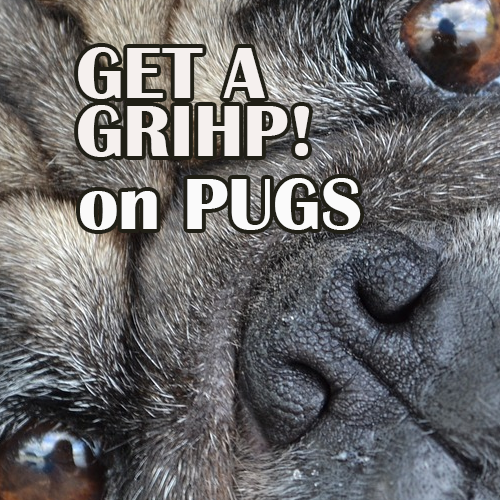

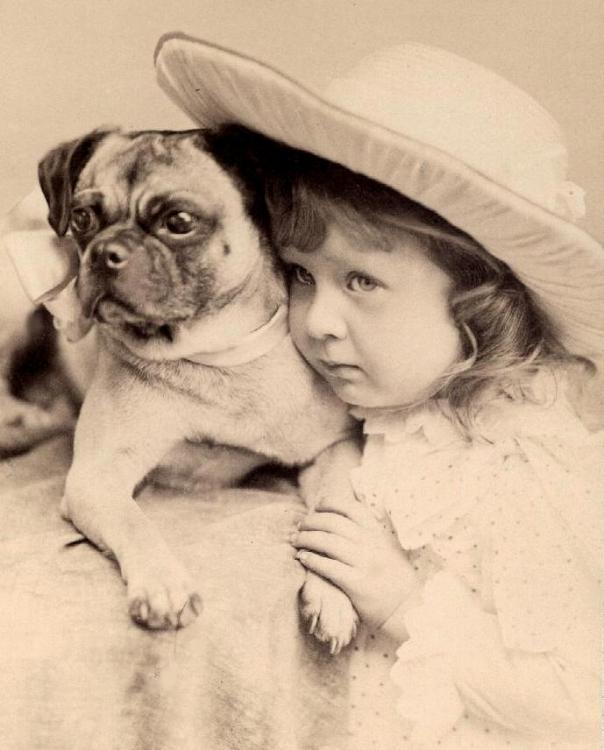
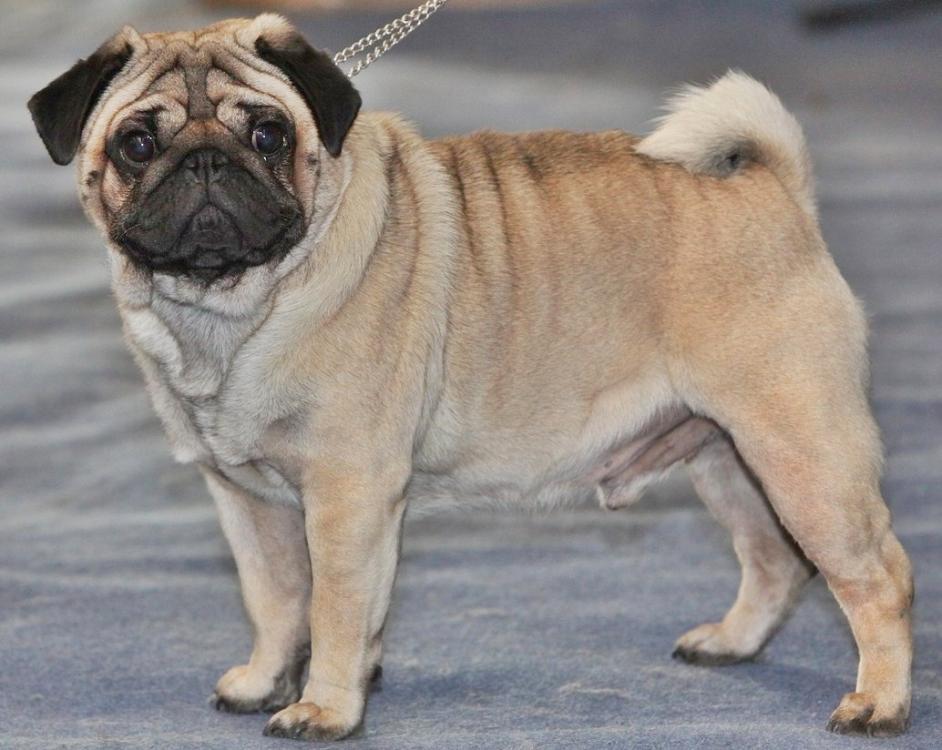
-Tweet.png.2de96723cc4387138832a36441aa36e9.png?w=249)
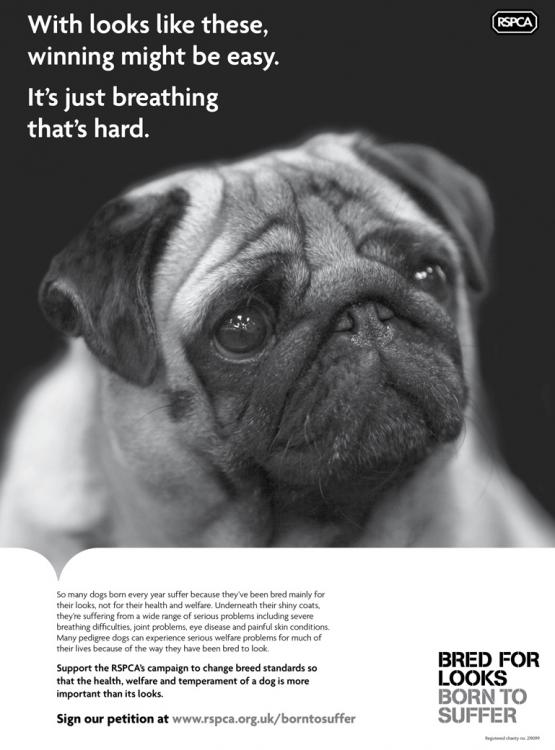
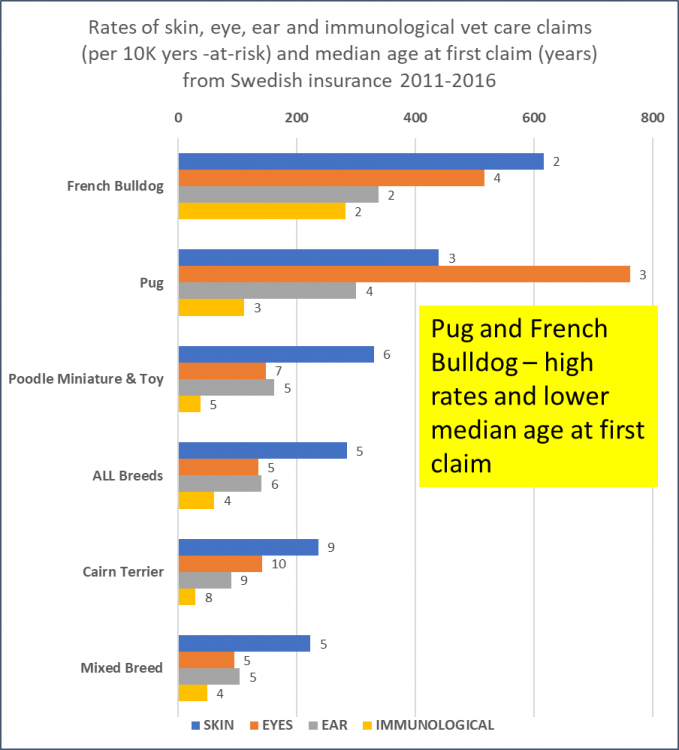
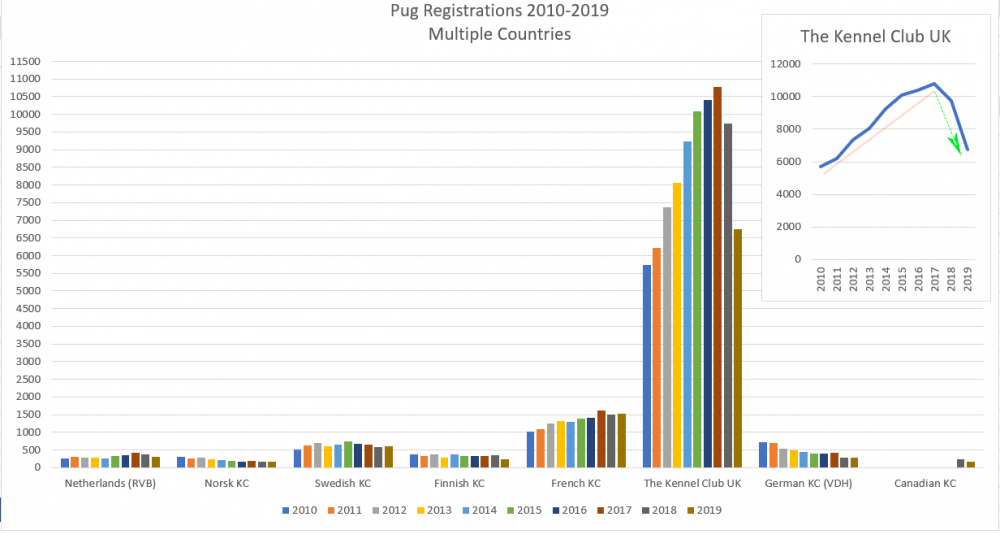
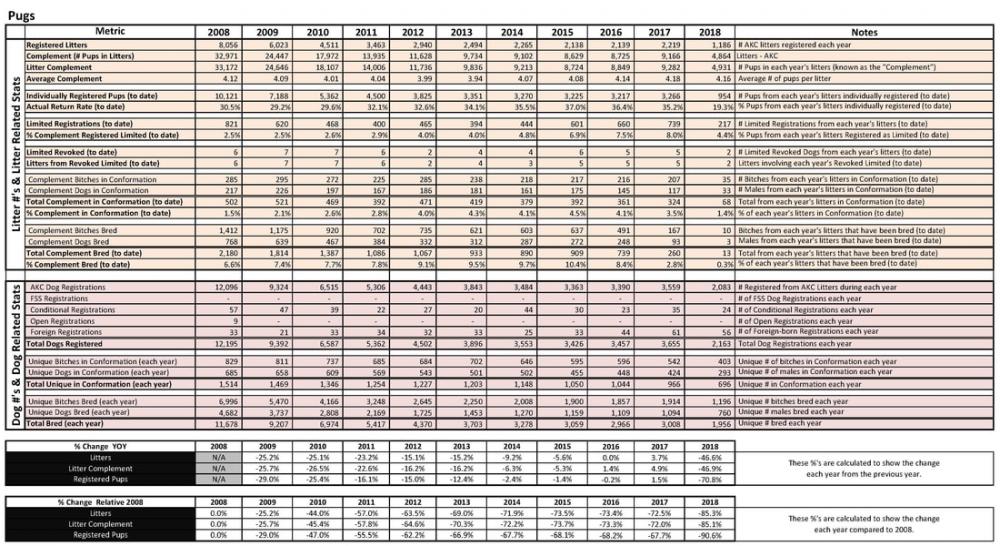
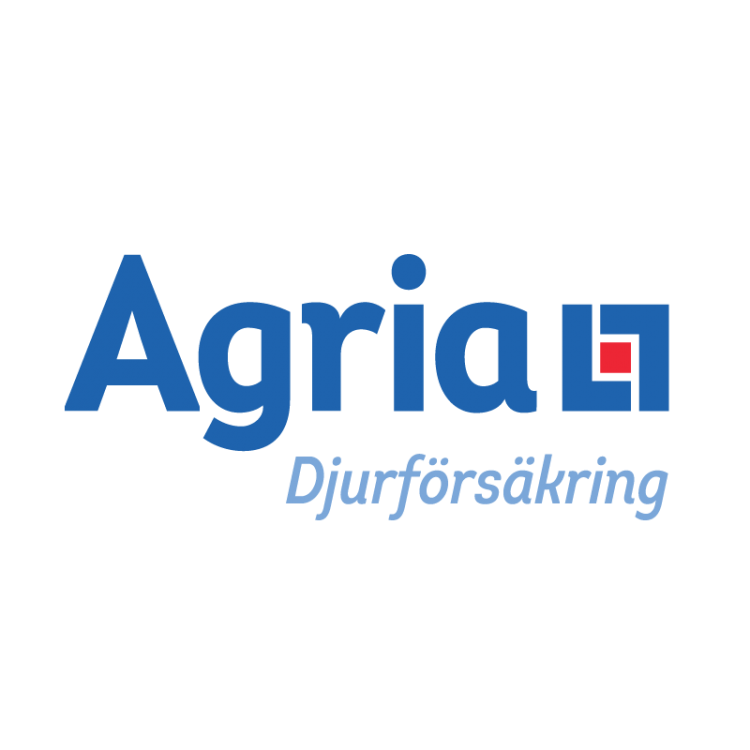
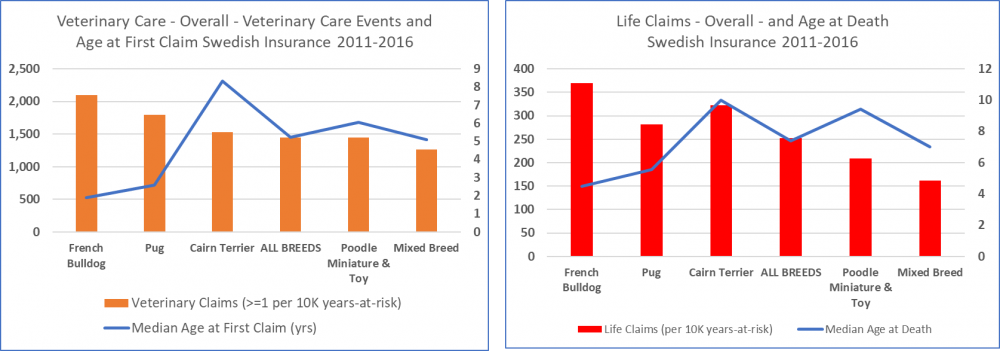
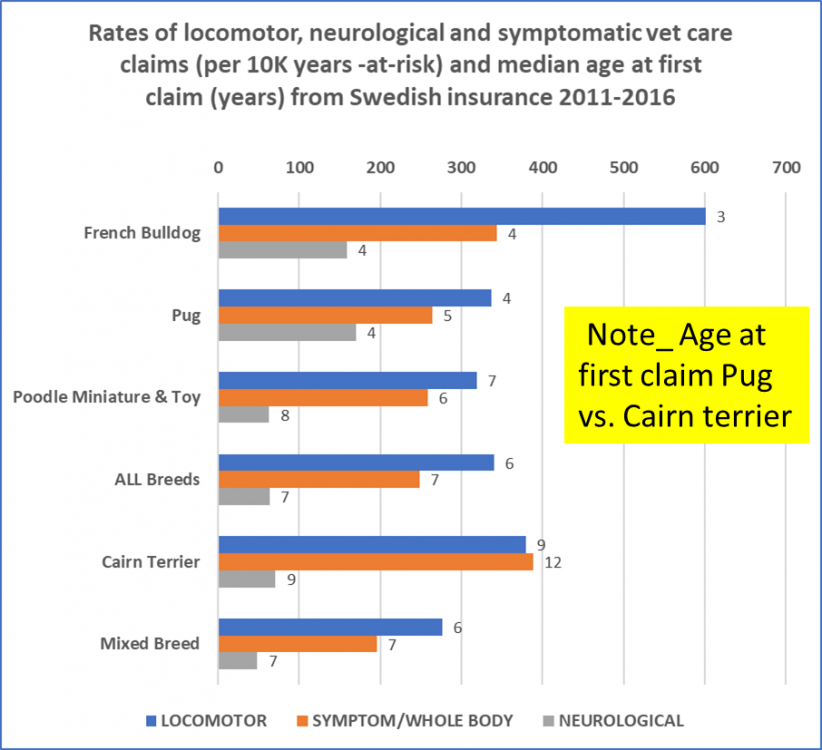
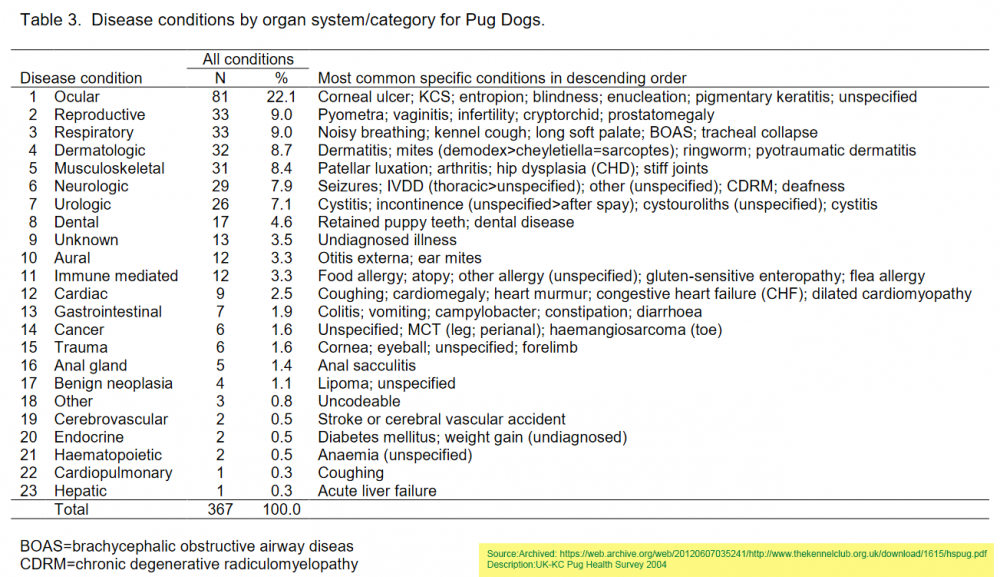

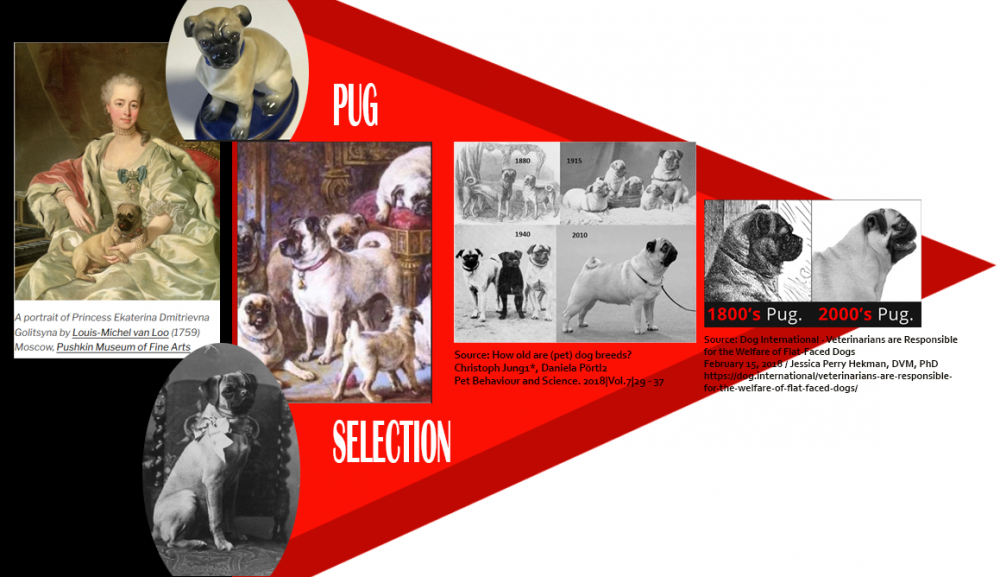

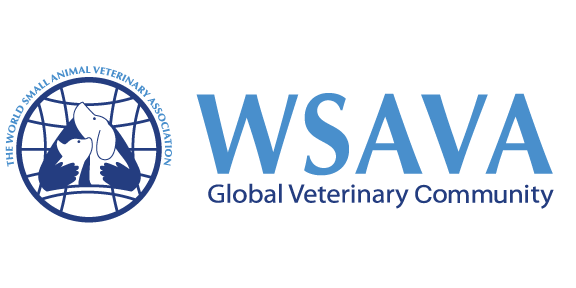
Recommended Comments
There are no comments to display.
Join the conversation
You can post now and register later. If you have an account, sign in now to post with your account.
Note: Your post will require moderator approval before it will be visible.